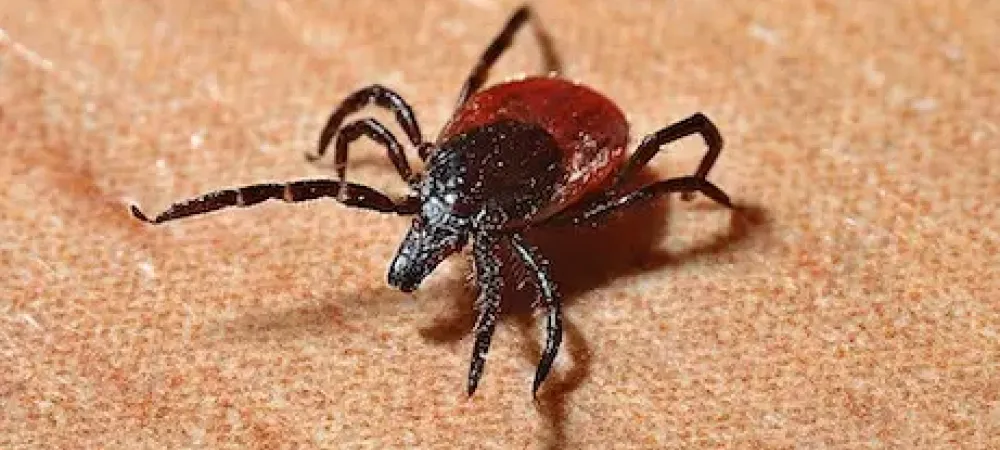How To Avoid Ticks: The Complete Guide

Ticks can be a real burden to you and your family. One crawling all over someone can have them paranoid and doing checks on themselves the rest of the day. They suck blood and leave diseases in their wake, so it is best to keep them far away and luckily, there are many ways to do that. In this article, we will go over the following:
- The types of ticks.
- The dangers of their bite.
- How to remove a tick.
- Tick prevention methods include what repels them and how to kill them.
Types of Ticks
Ticks are classified as arachnids, relatives of spiders which can explain why they can be so fear-inducing for some. These types of creatures are most active in the spring and summer when all the warm-blooded animals are enjoying the warm weather. While they may all have the same classification, not all ticks are created the same with some being peskier to deal with or more dangerous than others. In order to repel and exterminate the ticks, we have to know the enemy first. The main types of ticks we are going to discuss include deer ticks, dog ticks, and lone star ticks.
Deer Tick
While this certain tick may prefer a deer as a host, it will use humans just as well when this pest has the chance. They grow to be around 3 millimeters in size and have a brownish-black coloring to them. Female ticks also tend to remain active all of winter as well so it can be important to stay vigilant about ticks year-round. They prefer to live in damp environments surrounded by tall grass and shrubs.
Dog Tick
Dog ticks have 3 life stages with different target hosts for each stage. Smaller creatures, like insects and mice, are the hosts for these ticks until they reach an adult stage. At the adult stage, bigger animals such as dogs and humans are the hosts. Just like most ticks, they are active in the spring and summer months and like deer ticks, they prefer their habitat to tall grass and shrubs. The male dog tick can only attach to the host for 1 to 2 days while the female can attach to a host for more than a week in order to feed before laying eggs to start the cycle all over again.
Lone Star Tick
Unlike the other 2 ticks, this one prefers and seeks out humans as its host. These troublesome menaces crawl so fast that they can be waist-high on a human before they even notice them. Once again, just like most other ticks, they prefer tall grass as a habitat and are most active in the spring and summer months. The females can be easily spotted by the white spot on their backs while the males have their own identifying marks with streaks of white pigment on their backs.
Dangers of Tick Bites
Ticks, when they have selected their host, usually migrate to a moist and warm area of the body where they proceed to bite and can attach for up to 10 days. The most likely places for a tick to bite include the armpits, back of the knees, and around the ears, but they will go for most exposed body parts when given the chance. Most of the time, you most likely won't even feel the tick bite but will be able to see it attached if it does. There may also be symptoms if you are bitten which can include swelling or pain at the location of the bite, a rash, a burning sensation, and possibly blisters.
The symptoms aren't the only possible consequence if a tick bite is found. Ticks carry diseases and when they are attached long enough, they transmit these diseases to the host. Some of the possible diseases a tick can carry are:
- Lyme Disease.
- Rocky Mountain Spotted Fever.
- Colorado Tick Fever.
- Tularemia.
It is best to see a doctor as soon as it is determined a tick bite has occurred for treatment. Some of these diseases from tick bites can be very dangerous if left untreated. If a disease is transmitted from a tick bite, there are symptoms that can be identified including swollen lymph nodes, chills, muscle pain, and neck stiffness. There are more, slightly more serious symptoms if you have contracted Rocky Mountain Spotted Fever including vomiting and a sudden high fever to look out for as well.
How to Remove a Tick
If you have found a tick attached to your body, it must be safely removed to protect from tick-borne illnesses. There are tick removal tools that can be used but if none are available, tweezers can also be used.
- Once the tools are clean, it is ideal to grab the tick with your tool as close to the skin’s surface as you can and then pull up and away from the skin (try not to twist or bend the tick).
- After removing the tick, inspect the site to make sure no part of the head is left, and clean the site thoroughly. The tick should then be killed to keep it from biting the host again. The best way to kill a tick is to submerge it in rubbing alcohol for a safe way to finish it off.
If you suspect you may have acquired a tick-borne illness, it can be best to keep it in a sealed container to bring to the doctor’s office with you in order for the quickest and most accurate diagnosis.
Tick Prevention Methods
While they are a part of nature, there are still ways to prevent ticks and their hazardous bite. In addition to medicine for your pet and avoiding tick infested areas, there are methods effective for keeping them off of you and out of your yard.
One of the best tricks to keep ticks off you and your family is to tuck your pant legs into socks as well as wear light protective clothing in general in order to keep the available area for a tick to bite to a minimum.
Inspect Your Yard
Yard inspections can help give the peace of mind that no pest will be able to transmit diseases to you or your family and if ticks are found, they can be exterminated quickly and efficiently with the extra comfort of tick repellent to keep them out.
Remove Other Pests From Yard
As discussed earlier, ticks seek out and even sometimes prefer animals as their hosts. Removing other pests can make certain there are no ways for a tick to make it onto your property and give them no incentive to stay there.
Keep Your Yard Maintained
A simple way to prevent ticks is to clean up a yard and make it unappealing for them. Ticks prefer tall grasses and moist environments to hide in, so by maintaining your yard with things like mulch and gravel, the lawn can be separated from the more wooded areas. Removing things like leaf debris can also help to maintain your lawn and keep the ticks away. This way your space can become a happier place for your family to spend their time and a more uninhabitable place for ticks that will have them looking for a new residence.
Plant Tick Repellent Vegetation
Many natural kinds of vegetation can help to repel ticks out of your yard. It can be as simple as planting the kinds of vegetation listed below around your property to solve a tick problem and as an added bonus can add beauty to your lawn.
- Garlic.
- Sage.
- Mint.
- Marigolds.
- Lavender.
- Blueberry.
Utilize Natural Ingredients
Planting vegetation that repels ticks is a natural and easy way to prevent the arachnid, and you can also use essential oils to your benefit. There are many natural tick repellents as well as many other things you might have right in your household to keep these creepy crawlers away including:
- Cedar Oil Spray.
- Eucalyptus Oil.
- Neem Oil.
- Lavender.
- Peppermint.
Professional Tick Control
Ticks can be a pesky problem that is sometimes best left to the professionals. Tick inspections and spraying for ticks can make certain the tick problem in and around your home is exterminated and make your yard your family's own sanctuary.
Still Having Trouble With Ticks? Contact D-Bug!
It can be a comfort to know the parasites that plagued your yard are gone and gone for good, so if the removal of ticks ever seems overwhelming or unpleasant, contact the experts at D-Bug to take care of your worries! Our professional tick control is proven to work as we have serviced the local community for over 80 years now.


